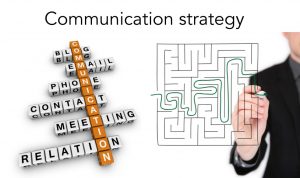
With the pending completion of my master’s program early next year, I’m sharing my studies and capstone focus in multicultural communications throughout November. I start with this post drawn from my research paper on employee multicultural communications programs and follow it up with a focus group report on the subject..
Expatriates working internationally for a multinational company (MNC) with a marginal to non-existent employee multicultural communications program (EMCP) not only suffer from decreased effectiveness in working relationships with host nation colleagues but also feel increased stress in personal relationships.
When I wrote that opening for a research paper two years ago, I felt like I was giving a personal testimony. At the time, I had just become a trailing spouse to my husband who had taken his first expatriate placement in Brazil. Along with the international move, I was in my first semester of my master’s program and trying to get Aubia Communications off the ground. There was a lot going on, to say the least.
As the company did not have a formal EMCP in place, the struggle to integrate into our new lives was made even more difficult.
Some definitions first
When discussing concepts, it’s important that we define the terms so we’re of one understanding.
Multicultural Communications
The more one understands and relates to publics’ backgrounds and way of life, the more effective two-way symmetrical communications can take place (Wakefield, 2010; Vujnovic & Kruckeberg, 2010).
Public relations literature offers many definitions and sub-definitions of multicultural communications. Related to this concept is international public relations, which is defined by communications researchers Bingqi Feng and Han Li as “the planned and organized effort of a company, institution or government to establish mutually beneficial relations with the publics of other nations.”
Focusing more on the cultural aspect of interaction, anthropologist Huber W. Ellingsworth defined cultural rhetoric as the “communication styles of a particular culture, including appropriate themes, modes of expression, standards, purposes, sources, and receivers of communication.”
In anthropology literature using ethnography to focus on “the creation and practice of culture, and its operation in relation to people’s lives, beliefs, values and knowledge” (J. Smajs, 2006, in L’Etang, 2010, pg.149), multicultural communications can be studied through “multiple understandings and interpretations of rhetorical-type practices that have evolved within a range of historical conditions and microcultures” (L’Etang, 2010, pg. 157).
Expounding on these concepts, communications professor Yusuf Devran defined intercultural communications as the “interaction that occurs whenever a message is produced in one cultural context and the way it gets interpreted in another one.” Furthermore, dealing with multicultural publics it is essential to have cultural intelligence or “the ability to function effectively across national, ethnic and cultural borders.”
As globalization, defined by communications researcher Guo-Ming Chen as the “expansion and intensification of social relations and consciousness across world-time and world-space” or the “social process in which the constraints of geography on social and cultural arrangements recede and people become increasingly aware that they are receding,” has increasingly drawn publics together, the need for strong multicultural communications has become essential.
Multinational Company
Famed communications theorists James and Larissa Grunig define what they call a “multiple organization” as “an organization with subsidiaries or affiliated companies spread across the globe, several business units, or large and relatively autonomous subunits.”
In business management literature, theorist Lan Ni defines international strategy for MNCs as “the way in which the organization positions itself with regard to the global business environment and creates and sustains competitive advantage across national boundaries.”
Employee Multicultural Communications Program
Many MNCs seem to offer cultural awareness training, defined by researchers Hsiu-Ching Ko and Mu-Li Yang as “the study of the trainee’s home culture and its effect on his/her behavior to enable the trainee to understand the nature of cultural differences,” but few seem to have a comprehensive program that understands differences and knows how to bridge those differences to deliver seamless transitions from one office to another. Ko and Yang also encourage language training for any EMCP “because knowledge of the language of the host country is vital to successfully living and working in the country.”
EMCPs are also an important function in facilitating long-term relationships and better educating employees on how to work in an increasingly multicultural environment (L’Etang, 2010; Vardeman-Winter & Tindall, 2010).
Why is multicultural communications important?
Globalization and the age of digitalization are two major challenges public relations faces today (McKie, 2010).
Going global means “living and working beyond the borders (and cultures and worldviews) of single nation states as citizens of the world, understanding, respecting, and embracing others in mutual exchange and for mutual benefits.” Achieving this definition, multicultural initiatives need to be incorporated along with technical training.
With an approximated one-third of expatriate employees completing international assignments at subpar expectation levels of their supervisors and these failures costing MNCs high amounts, a comprehensive EMCP can be effective in alleviating these problems.
According to Golin CEO Fred Cook, “companies that understand local behaviors and preferences will be the ones to succeed in the new era of globalization.” In a period where time and distance are shrinking through the advent of companies being told to “go global or go home” and increasingly-sophisticated Internet capabilities, these two aspects are forcing public relations professionals to adopt a more holistic approach to communications. No longer can practitioners use ethnocentric public relations methods across the board in MNCs. As the Grunigs encourage, these professionals now must adapt to polycentric processes that reach publics throughout the world.
How do you incorporate multicultural communications?
To succeed in today’s globalized world, companies operating across national borders must learn how to communicate with other cultures in appropriate and sensitive ways.
Are you adjusting your communications methods to meet the needs of multicultural clients? What are some of your best practices?
All reference citations can be found in the SAGE Handbook of Public Relations edited by Robert L. Heath.



